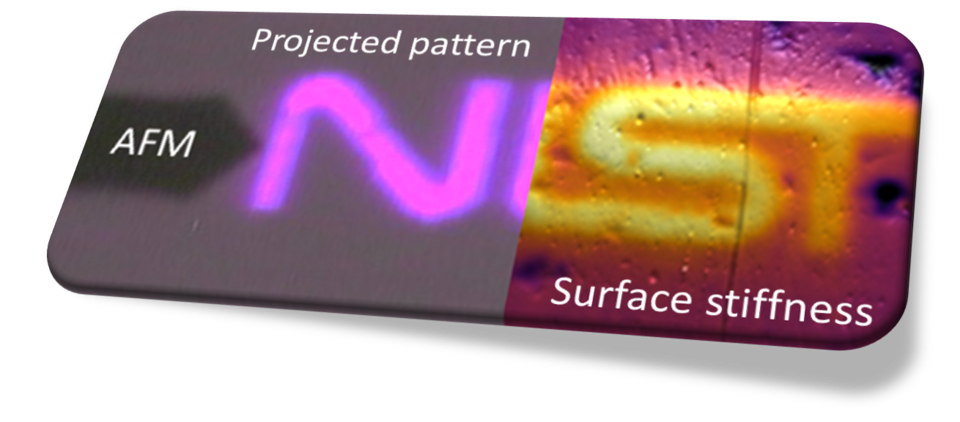Summary
NIST's goal is to support innovation in the Photopolymer Additive Manufacturing (PAM) industry by enabling unprecedented high-resolution, mechanically-precise vat photopolymerization via fundamental understanding informed by novel voxel and sub-voxel-scale characterization throughout all major stages of the printing process.
Description

NEWS
September 2021: NIST and Radtech have launched a Photopolymer Additive Manufacturing Alliance (PAMA) to advance strategic goals for research, sustainability, and regulation in PAM. PAMA is on a mission to make photopolymer additive manufacturing (PAM) more accessible and to increase the safe and responsible adoption of these technologies.
https://www.3dprintingmedia.network/radtech-forms-new-photopolymer-am-a…
December 2020: NIST published 2 new manuscripts related to custom instrumentation for PAM characterization. The first manuscript "Digital light processing in a hybrid atomic force microscope: In Situ, nanoscale characterization of the printing process" describes the design and application of a novel instrument that combines a PAM light engine with the nanoscale characterization capabilities of an atomic force microscope. The instrument will enable numerous in situ characterization modes, three of which are described in the manuscript. The second manuscript "Voxel-Scale Conversion Mapping Informs Intrinsic Resolution in Stereolithographic Additive Manufacturing" applies the above instrument to locally map reaction and diffusion in the vicinity of a microscale photopattern, in a thiol-ene resin. The findings show that oligomers can diffuse large distances away from the photopattern, compromising high resolution printing.
The conversion mapping work was covered widely in the additive manufacturing media, as seen in the below links.
1) NIST SCIENTISTS DEVELOP METHOD OF PRECISELY MAPPING POLYMER CURING DURING 3D PRINTING
2) Polymerisation Optimisation for More Accurate SLA Parts
3) NIST researchers measure nano-vibrations in SL printing
August 2020: NIST and Radtech hosted a webinar debrief of the findings from the 2019 PAM workshop. A recording of the webinar is available here. The webinar was moderated by Dianne Poster (NIST) and Mike Idacavage (RadTech). Speakers Included Callie Higgins (NIST), Jason Killgore (NIST), Neil Cramer (Colorado Photopolymer Solutions), Tom McKeag (UC Berkely), Max Zieringer (FormLabs) and Treye Thomas (US Consumer Product Safety Commission).
October 2019: NIST and Radtech hosted the PAM stakeholder community at the Boulder campus for PAM Workshop: Roadmapping a Future for Stereolithography, Inkjet, and Beyond. The attendees identified the following challenges and recommended research directions (more details in forthcoming summary and report).
Overarching Challenges to Advancing PAM Technology
- Limits in materials and chemistry
- Lack of advanced characterization and standards
- Rapidly evolving and dynamic hardware, software, and scalability needs
- Lack of clarity and specificity in environmental, health, and safety regulations
Recommended Research Directions
- Material Science and Engineering to Establish Process-Property Relationships, including in-situ and multimode, of the PAM process, such as simultaneous modulus and crosslinking density measurement
- Advanced Computing for Materials Discovery and Process Modelling of PAM parts to accurately predict performance of photopolymers on multiple length- and time-scales
- Measurement Science and Standards for Reliable PAM Performance to overcome throughput and quality barriers, such as varying light intensity and exposure dose combined with increasing build volume capacity
- Environmental, Health, and Safety Regulations for Responsible PAM Adoption in coordination with production companies and regulation institutions
- Industry Collaborations to Expedite PAM Maturation, such as shared test facilities for pilot programs and computing capabilities

